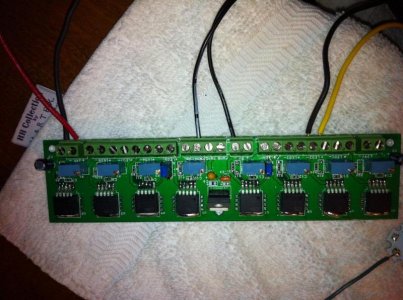So I built one of the 8 driver Cat4101 boards last night and could not get it to fire up. I haven't tested all the drivers on the board; however, I have one question as I proceed. Do I have to have a PWM signal in order for the circuit to work? Fishman had told me that I could just jump 5v to the signal for now, does this mean just supply 5v from a seperate source other than what's already supplied to the Vin from the onboard 5v? I'm building up a test string from som XR-Es I have laying around so I don't fry my actual tank LEDs.
You can use the 5v signal that's already on the board. The Cat chips should then turn on- if the circuit isn't missing anything else.

